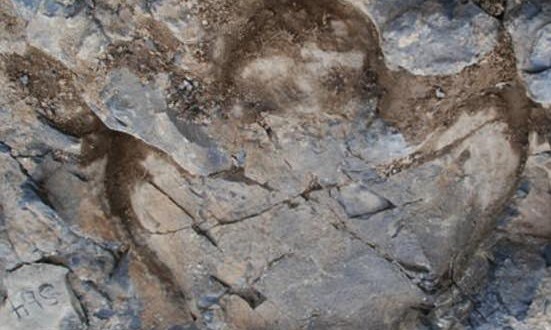Dinosaur Track Site has been discovered by the Alaska’s Denali National Park. The track site suggests that many dinosaurs might have walked through the track.
The fossil evidence has furthermore strengthened the conviction that Dinosaur lived at the polar latitudes at the end of the Cretaceous Age.
The researchers have estimated the time to be around 70 million years while deciding the age of the fossils.
“Denali is one of the best dinosaur footprint localities in the world. What we found that last day was incredible — so many tracks, so big and well preserved,” Anthony R. Fiorillo, a curator at the Perot Museum of Nature and Science in Dallas, Texas, and the study’s lead author, said in a statement.
“Many had skin impressions, so we could see what the bottom of their feet looked like. There were many invertebrate traces — imprints of bugs, worms, larvae and more — which were important because they showed an ecosystem existed during the warm parts of the years,” he said.
The researchers could identify four distinct sizes of footprints, ranging from 5 inches to 24 inches. While more than 80 percent of the tracks were believed to have been made by adults, 13 percent of the tracks likely belonged to young hadrosaurs and only 3 percent were believed to have come from juvenile hadrosaurs, Live Science reported.
Based on the small number of juvenile footprints, the researchers have concluded that the young hadrosaurs might have spent only a short period of time being small and vulnerable. The tracks also helped the researchers to theorize that the juveniles were probably unable to migrate to other places, so the hadrosaurs spent their entire lives in the Arctic.
Fiorillo and his team of researchers have been studying the new Denali track site since 2011, and believe that the tracks were likely made between 72 million years to 69 million years ago in a muddy river during the summer.
“If you take a great big herd of plains eaters, they have to move at some level, otherwise they strip out all the vegetation,” Live Science quoted Fiorillo as saying. “But there’s a growing data set that suggests they didn’t do the thousand and thousands of miles of migration that was originally considered.”
Agencies/Canadajournal
 Canada Journal – News of the World Articles and videos to bring you the biggest Canadian news stories from across the country every day
Canada Journal – News of the World Articles and videos to bring you the biggest Canadian news stories from across the country every day



